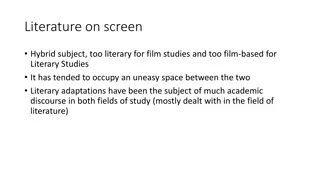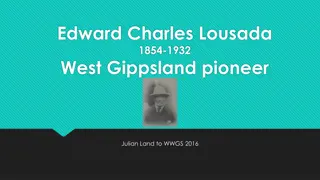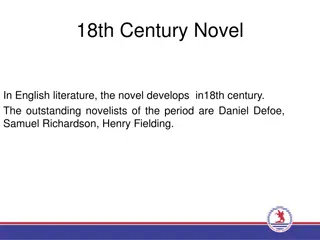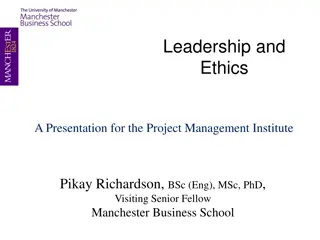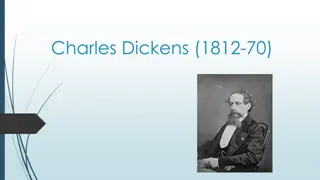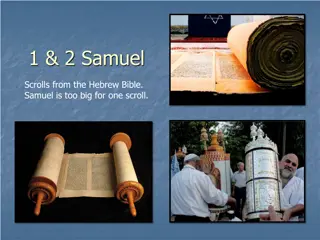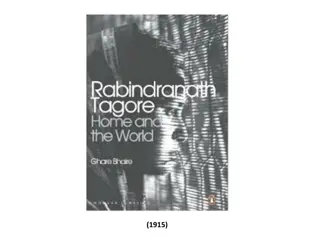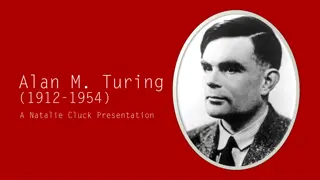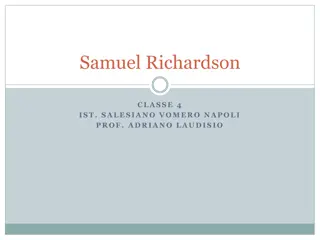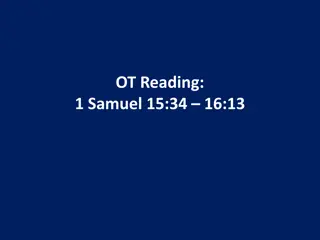Samuel Richardson: A Pioneer in Epistolary Novels
Samuel Richardson, a self-taught writer, created notable works such as "Pamela" and "Clarissa" characterized by moral virtues and psychological depth. His epistolary style allowed for intimate exploration of characters' inner worlds while conveying themes of virtue and social class.
Download Presentation

Please find below an Image/Link to download the presentation.
The content on the website is provided AS IS for your information and personal use only. It may not be sold, licensed, or shared on other websites without obtaining consent from the author. Download presentation by click this link. If you encounter any issues during the download, it is possible that the publisher has removed the file from their server.
E N D
Presentation Transcript
Samuel Richardson Pamela
LIFE He only attended the Common School-Learning (low education) and he was mostly self-taught He worked as apprentice in a printer s shop and later opened a printing shop of his own. He was a hard worker, a keen reader and a prolific producer: he published several journals and magazines At the age of 51 he wrote his first novel, PAMELA, which was a success.
WORKS After Pamela, he wrote 2 more EPISTOLARY NOVELS. His works are: 1) Pamela, or Virtue Rewarded (1740-2) 2) Clarissa, or The History of a young lady (1747-8) 3) The History of Sir Charles Grandison (1753). The protagonists of his works all embody the highest virtues of rectitude, chastity and generosity.
PAMELA: THE PLOT INTRO Pamela Andrews is 15 years old and is a maidservant. The son of the household (house owner), Mr. B, is attracted to her and tries to seduce her, but she refuses him to protect her virtue. PART 1 Pamela writes letters to her parents speaking about her moral problems and asking for advice.
PART 2 Mr B. abducts and imprisons her in his country house. Pamela keeps writing letters but she doesn t know if her parents will receive her letters. She keeps resisting Mr. B., who finally asks her to marry him and she accepts. The marriage is the REWARD for Pamela s virtue (in fact the subtitle of this work is Virtue rewarded ). In fact she obtains a SOCIAL POSITION that was only for women of upper classes.
EPISTOLARY NOVEL Pamela was written in the form of an EPISTOLARY novel, that is a series of letters written by the protagonist (some also by her parents). This form allows the writer to express the character s INNER WORLD and THOUGHTS at the time of the actions. However, Pamela is full of ACTION and DIALOGUE.
The aims of the book To amuse and entertain 1. 2. To teach moralising aim The moralising nature is linked to the PURITAN middle-class idea of a REWARD for VIRTUE and a PUNISHMENT for SINS. However, some readers saw Pamela as a woman who was trying to obtain a higher status by marrying a nobleman (for example Fielding parodied Pamela in Shamela).
MODERN novel & PSYCHOLOGICAL characterisation In Pamela there is a DEEP psyhcological analysis which lacks in the previous novels, e.g. DEFOE s. Pamela has a world of feelings and Richardson describes them with great sensitivity. He is the pioneer in the field of characterisation.
The characters: PAMELA PAMELA is an unusual heroine: She works to earn her living. She rebels against the social attitude of the time. In novels it was unusual to have an ordinary person as the protagonist. They were queens and ladies. Lower classes were described with irony, Richardson describes her seriously. Pamela is a ROUND character: a complex character which has a DEVELOPMENT or a change and shows different aspects of his/her personality along with his/her feelings and thoughts

 undefined
undefined














